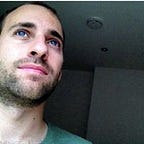Rent vs Buy vs Build
**DEAR READERS — We’ve moved this blog to Substack! Find the complete set of posts at supernuclear.substack.com.***
Perhaps the most foundational decision you will make when building coliving is Rent vs Buy vs Build.
Definitions:
- Rent: Signing a lease with an unaffiliated landlord
- Buy: Buying a property that is pretty much ready to be used for coliving on Day 1
- Build: Buying a property that needs new buildings or major renovations before it can be used for coliving (e.g. buying a plot of land)
Phil and Gillian’s first coliving communities were both Rent. Their next ones are all Buy or Builds.
Like many things, the tradeoff here is between difficulty and benefit. Buying is harder than Renting. Building is harder than Buying.
Let’s take Rent as the baseline and look at the extra benefits and work of Buy and Build.
The tradeoffs here also may be different in different locations. The Bay Area is a notoriously difficult, expensive, and intensely regulated place to build real estate. However there are a fair number of old gold rush mansions available for rent. A lot of people doing coliving in the Bay start out by renting. The delta between buy and build may be smaller in other locations.
If we had to put a number to it, we’d say Buying is 2x harder than Renting and Building is 3x harder than Buying.
Our general advice to first-time coliving community builders: Rent if you can. Buy if you can’t.
== Case study: The rent vs build/buy decision at Radish ==
We were tired of paying obscene sums of money to a landlord and having to ask permission to paint a wall. We wanted to own.
Our first instinct was Buy. But it turns out the real estate omens were not in our favor.
We would have loved to just Buy something that worked, but it simply didn’t exist in the Bay Area. Our requirements were: a) space for 10–15 adults b) a handful of private units so people could have kids c) easy commute (<40 mins) to San Francisco’s central business district.
There simply wasn’t a vacant property anywhere in the Bay that fit these criteria. And we searched for 2 years trying to find it.
So we knew we had to Build to expand the number of potential properties.
Eventually, we found something close — a property that had roughly 60% of what we needed — and decided to build the remaining 40%. Call it halfway between Buy and Build. Seemed doable.
We purchased a property with two buildings. We renovated one of the buildings, built a third, and redid the outdoor area on the whole complex. This took 1.5 years and added 40% to the original purchase price of the property. And that was considered “quick and cheap” if you talk to people in the Bay Area real estate industry.
But it was very very worth it. We have the perfect container for our community. The community poured in effort to make it happen. Some friends pitched in money. Others came over to build things. The place is designed specifically for our needs.
We can plant trees knowing we will still be there when they bloom.
We can decide for ourselves when rent goes up and down.
We can dress up in Tuxedos and take down extra walls with a sledgehammer. Because they are all our walls.
But this was not without putting in the work. Likely thousands of hours of it collectively. It was the right tradeoff for us. A different tradeoff might be right for you.
